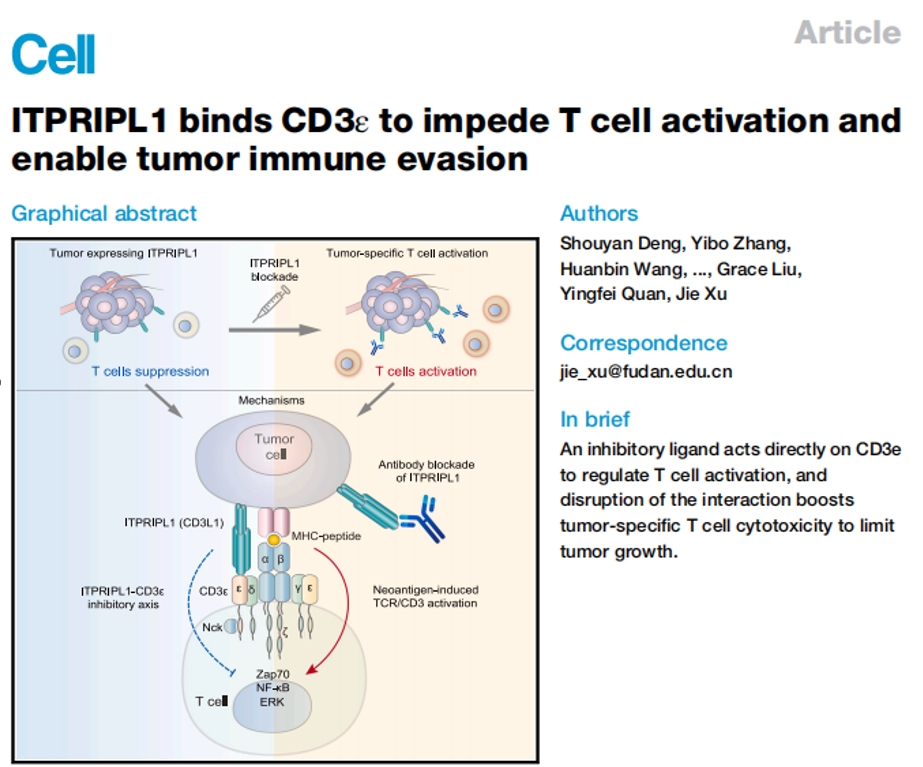Cell: BioTroy discovered the first ligand of CD3 as target for cancer immunotherapy
In a recent Cell paper, BioTroy Therapeutics and the research team led by Professor Jie Xu from Fudan University has shed light on CD3L1 (CD3 ligand 1), revealing it as a crucial mechanism in tumor immune evasion, particularly in patients who respond poorly to PD-1/PD-L1 inhibitory therapies. The expression of CD3L1 (or ITPRIPL1) exhibits several intriguing characteristics, including its mutual exclusivity with PD-L1 expression in most tumors, its prevalence in tumors resistant to PD-1/PD-L1 blockade, and enrichment in immune-privileged organs. These features suggest alternative immune evasion pathways and highlight the role of CD3L1 in maintaining immune privilege.

Furthermore, knockout studies in mice have demonstrated that CD3L1 plays a pivotal role in maintaining immune privilege, as its absence led to substantial autoimmune reactions in the testis. Additionally, a wide range of tumors express high levels of CD3L1, hindering T cell activity and enabling tumor immune evasion. The interaction of CD3L1 with CD3ε, a receptor, results in a sustained binding of Nck to the intracellular domain of CD3ε. This binding competitively inhibits the recruitment and phosphorylation of Zap70, effectively dampening T cell activation in its initial stages.
Previous research on TCR/CD3 receptor complex focused on TCR as the sole receptor for MHC ligands, while CD3 was thought to merely transduce TCR signals. This study reveals the existence of natural ligands for CD3, challenging the TCR-dominant model and introducing a "bipolar" mode where both TCR and CD3 can receive natural input signals. This groundbreaking discovery could significantly impact tumor immunotherapy drug development.

Image: The “jigsaw of target expression”, assembled by IHC staining of CD3L1 in various tumor tissue samples.
Currently the CD3L1 antibody is in phase I clinical trial, after obtaining the IND approval from FDA and China NMPA. Tumor patients interested in participating this clinical trial can contact BioTroy by e-mail (clin.oper@biotroy.cn).
Original article link:https://doi.org/10.1016/j.cell.2024.03.019



